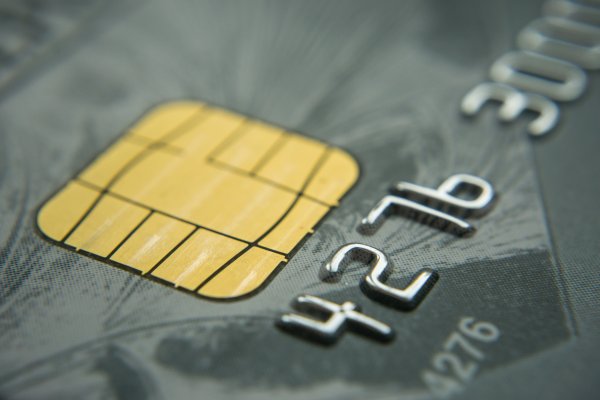Even though they’ve only become popular in the US starting with 2015, chip credit cards have been around in Europe since the 80s.
EMV cards, also known as smart cards, chip and signature, IC cards or chip and PIN cards (depending on the way they work) involve a new and more advanced technology. In addition to the magnetic stripe, they also have an embedded chip on the front, with stored data on it. The EMV abbreviation stands for Europay, MasterCard and Visa, which are the 3 major companies that came up with this technology.
EMV cards are authenticated either through direct insertion into the reader or from the distance, through RFID (radio frequency identification) technology, by holding the card close to the reader. Cards that have to be inserted can be verified either through typing a PIN (for the chip and PIN cards) or by direct signature from the owner of the card (for chip and signature cards). Chip and PIN cards are more popular in Europe, Australia, Canada, New Zeeland, Brazil, while chip and signature cards are widespread in the US, Mexico, Asia and some countries in South America.
Here are some of the PROS and CONS of chip cards, versus old magnetic ones.
PROS
The biggest advantage of chip cards is by far the fact that they are more secure. Magnetic cards can be falsified easier by using devious devices such as skimmers. By using this device you can swipe the original magnetic card in and then a new blank card and you can easily replicate the original. With chip cards however, the information on the chip is highly encrypted with 3DES (triple data encryption) so it can only be used and deciphered by the terminal and the processor. Hackers and thieves will have a significantly harder time trying to use the information on it, because of the unique and high level encryption. Chip cards use one-time codes whenever they are inserted into the reader, meaning the generated code is always different each time you insert your card, which makes it difficult for thieves to steal your information.
As we’ve already mentioned, another advantage of chip cards is the fact that they are harder to counterfeit.
By decreasing the number of fraudulent transactions, these cards convey more credibility to your clients. So if you are a business owner, your customers will trust you more if you use this technology, not to mention the fact that you will also reduce your losses.
CONS
Regarding the disadvantages of EMV cards, they are mostly related to their costs. Upgrading your POS systems and terminals will require some financial investments, although on the long run you will get your money’s worth because you won’t have as many losses caused by frauds of all sorts. New POS systems are indeed expensive and a lot of merchants still prefer to rely on their even 30 years old terminals and devices because they are sustainable and still work well. Also, magnetic strip cards are known to be faster than chip cards, in terms of processing.
However, we feel that the first concern and priority for any business owner or consumer should be security and chip cards have proved to be far superior from this point of view.





